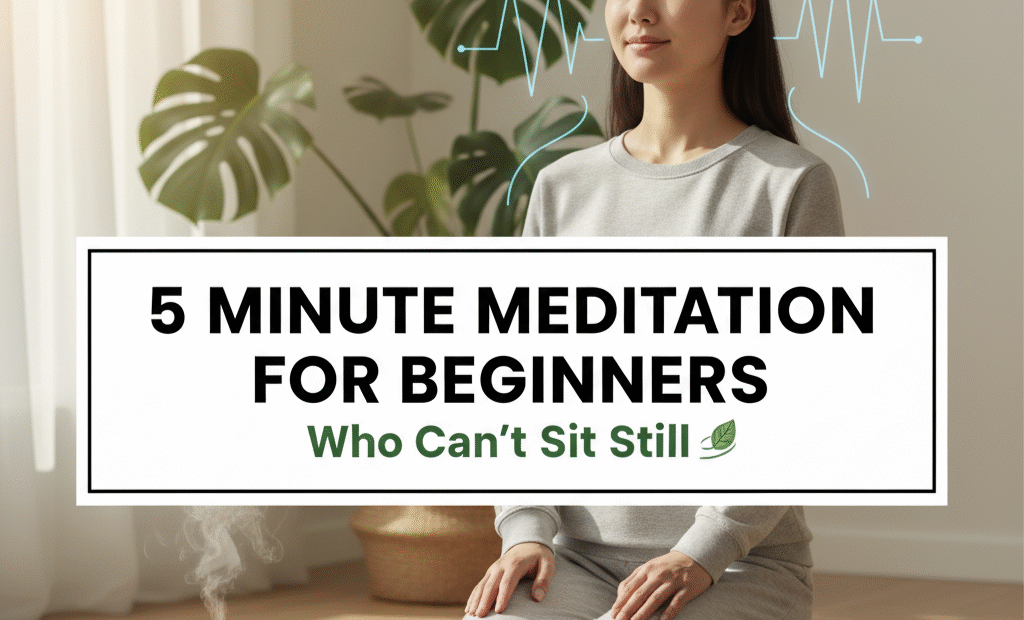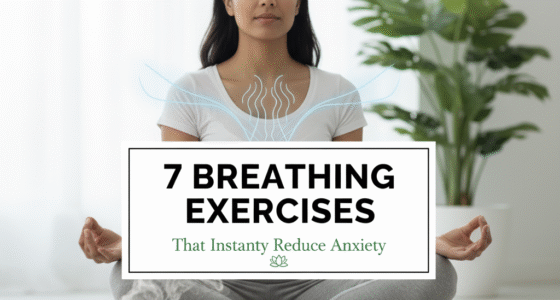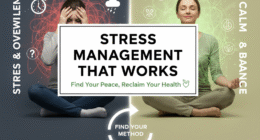Meditation is often associated with sitting silently for long periods, but that can be intimidating for beginners or anyone who finds it hard to stay still. The good news? You don’t need to sit for hours to experience the benefits. Even a short, guided 5-minute meditation can calm your mind, reduce stress, and improve focus. This guide will walk you step-by-step through a simple meditation technique designed specifically for beginners who can’t sit still.
Why Meditation Matters
Meditation isn’t just for monks or yogis; it’s a proven tool for mental and physical well-being. Research shows regular meditation can:
- Reduce anxiety and stress levels.
- Improve attention, focus, and productivity.
- Enhance emotional resilience.
- Support better sleep and relaxation.
Even short, consistent sessions can deliver these benefits over time.
Preparing for Your 5-Minute Meditation
Before you start, set the stage to make your meditation more effective:
- Find a comfortable position: Sit in a chair, on the floor, or even stand if sitting is uncomfortable.
- Minimize distractions: Turn off your phone or put it on silent mode.
- Use a timer: Set a 5-minute timer so you don’t have to check the clock.
Step-by-Step 5-Minute Meditation
1. Focus on Your Breath
Close your eyes (or soften your gaze) and take a deep breath in through your nose, then slowly exhale through your mouth. Notice the rise and fall of your chest and belly. Don’t try to control your breath; simply observe it.
2. Count Your Breaths
To keep your mind from wandering, silently count each inhale and exhale up to 10, then start again. Counting helps anchor your attention to the present moment.
3. Observe Your Thoughts
Your mind will inevitably wander. When it does, gently bring your focus back to your breath without judgment. Think of your thoughts as clouds passing in the sky—they come and go, and you don’t need to follow them.
4. Body Scan (Optional)
If you want a more grounded experience, quickly scan your body from head to toe. Notice areas of tension and consciously relax those muscles while breathing deeply.
5. End Gently
When the timer goes off, slowly open your eyes and take a few deep breaths. Notice how your body feels and carry this calm awareness into your day.
Tips for Beginners Who Can’t Sit Still
- Start with even shorter sessions (1–3 minutes) and gradually increase to 5 minutes.
- Try walking meditation if sitting is uncomfortable—focus on each step and your breath.
- Use guided meditation apps or YouTube videos to stay engaged.
- Remember, consistency matters more than duration—daily short sessions are better than occasional long sessions.
Common Challenges and How to Overcome Them
Restlessness
If you feel fidgety, try a standing or walking meditation to release excess energy while staying mindful.
Sleepiness
If you feel drowsy, open your eyes, sit upright, or meditate earlier in the day when your energy is higher.
Racing Thoughts
Use counting or a short mantra to redirect your focus back to the present moment.
Benefits of a Daily 5-Minute Practice
Even 5 minutes a day adds up over time. Regular short meditation can:
- Reduce stress and lower cortisol levels.
- Improve mental clarity and problem-solving skills.
- Increase emotional stability and patience.
- Enhance mindfulness in daily activities, leading to better decision-making and focus.
Conclusion
Meditation doesn’t have to be complicated or time-consuming. For beginners who can’t sit still, a 5-minute focused practice is more than enough to start reaping the benefits. By consistently practicing, observing your breath, and gently redirecting your thoughts, you can experience calm, clarity, and improved focus in just a few minutes a day. Start today, and remember: progress is built on small, consistent steps.









